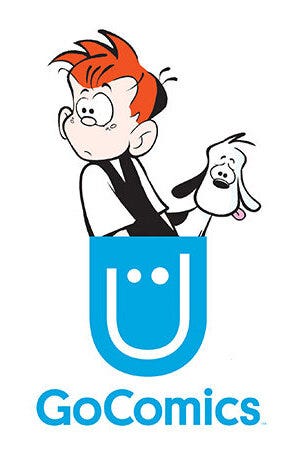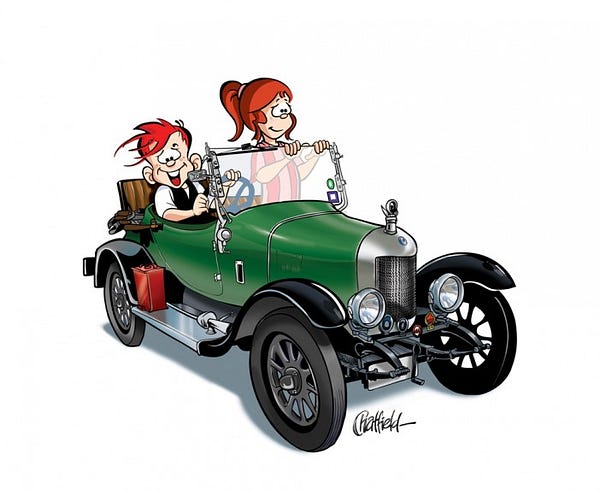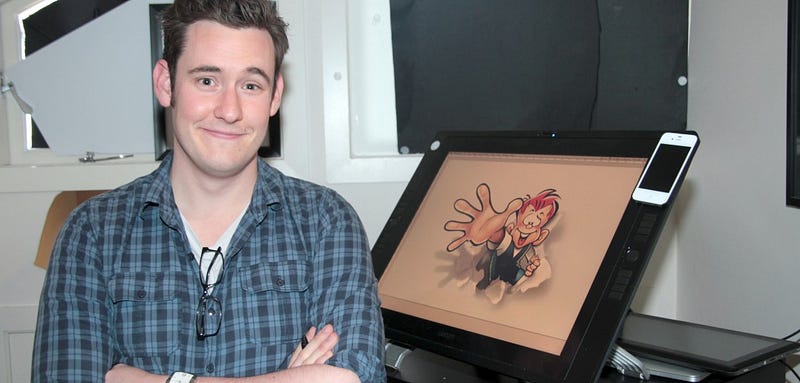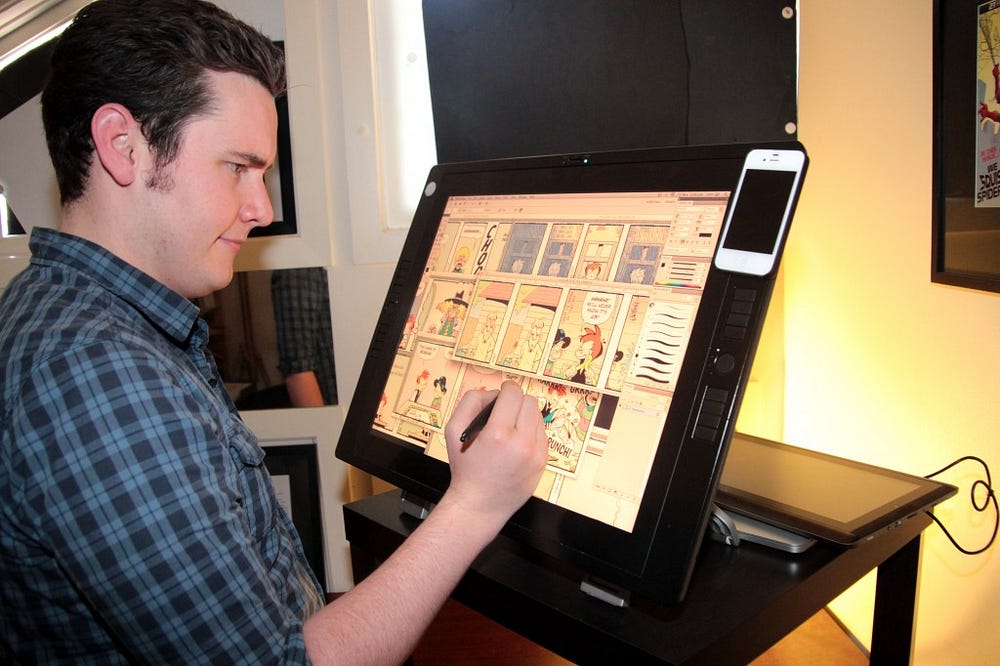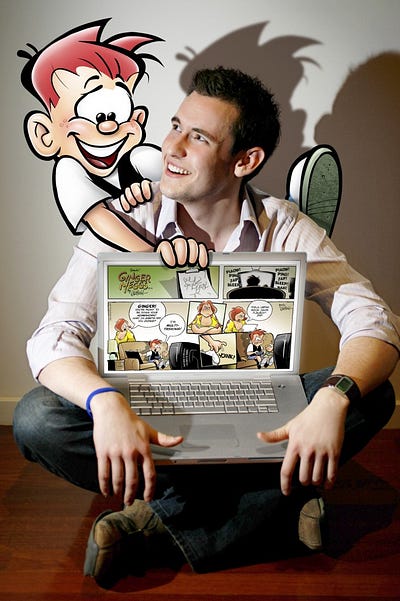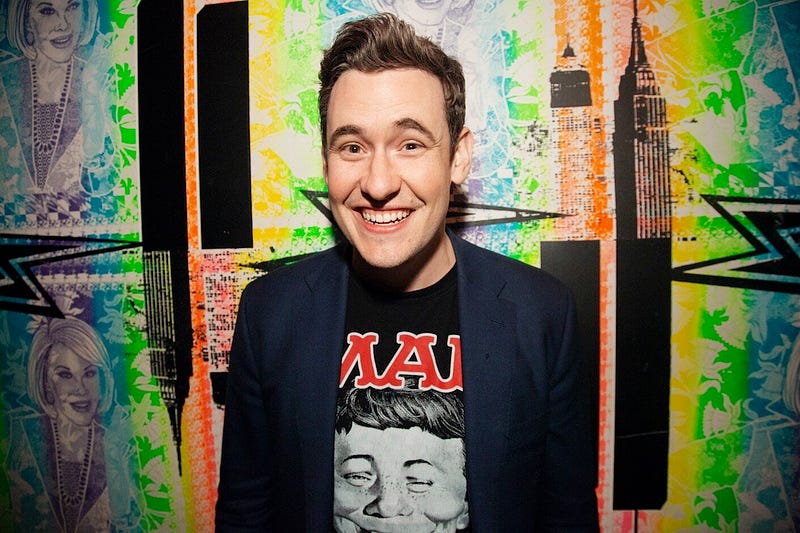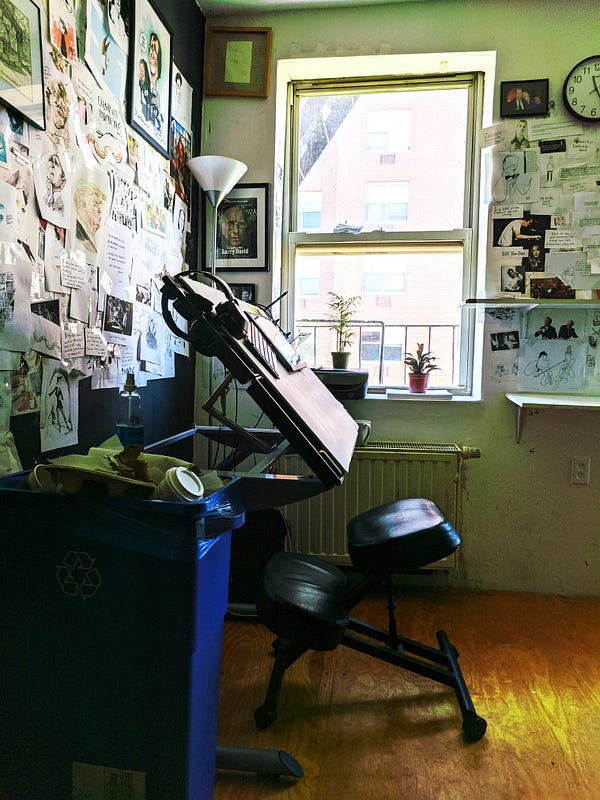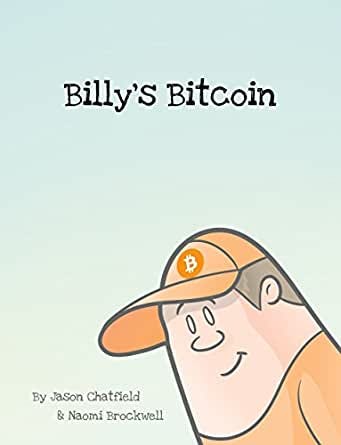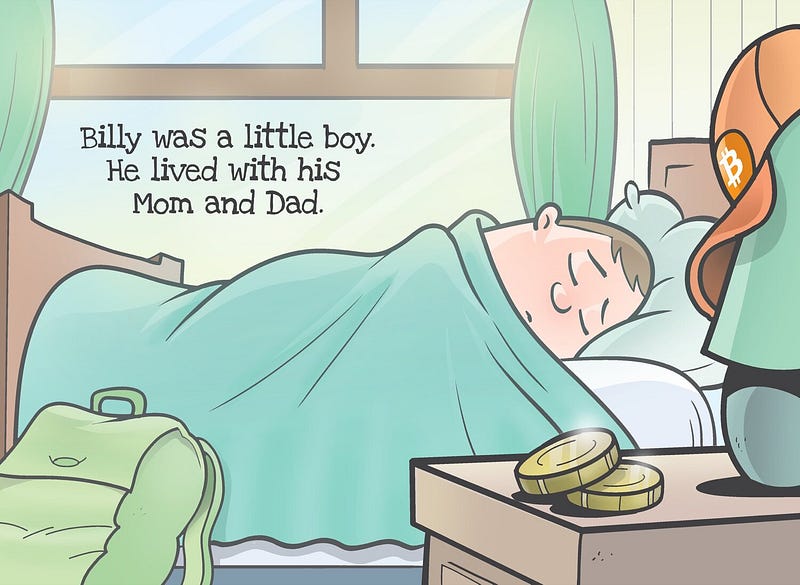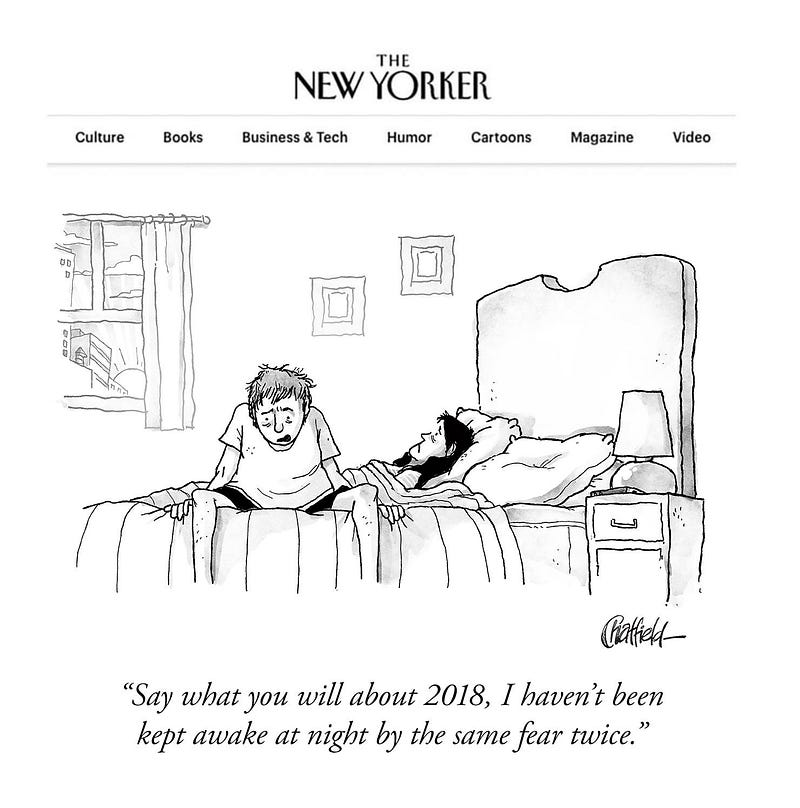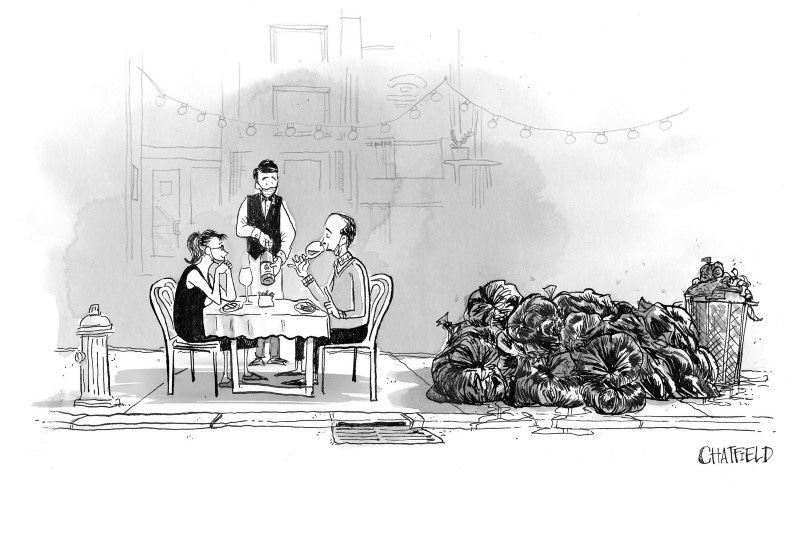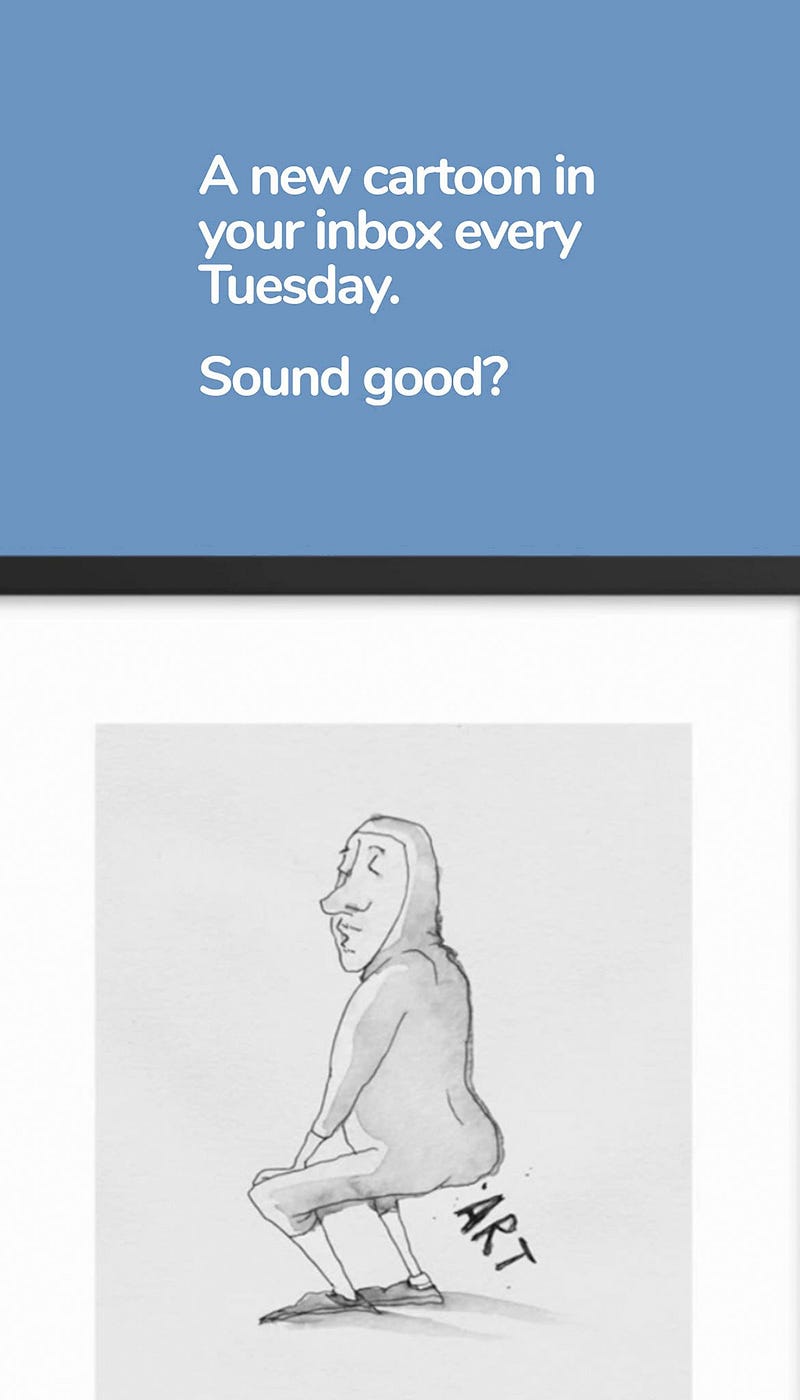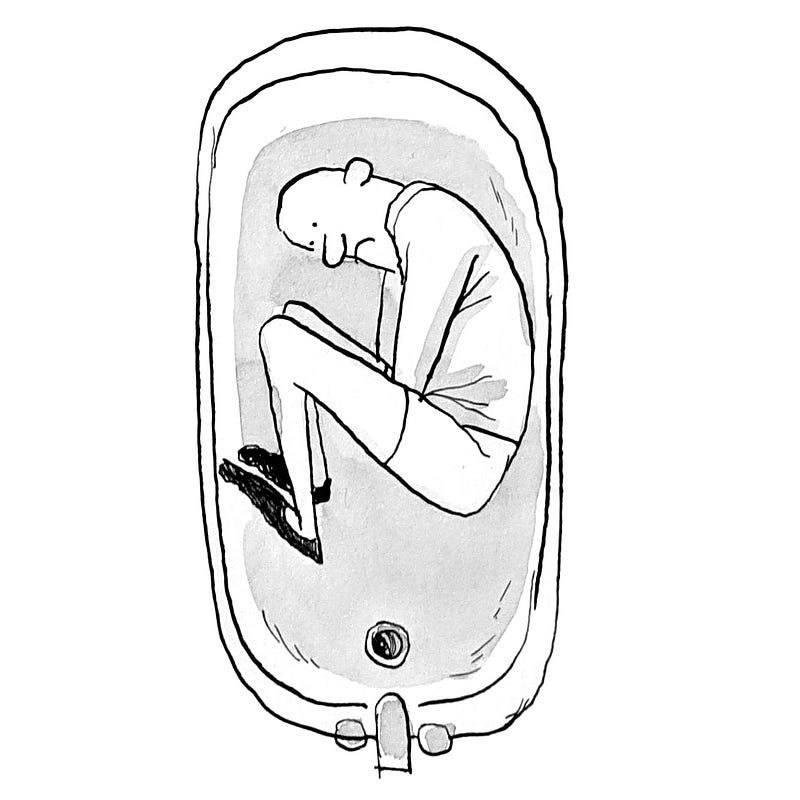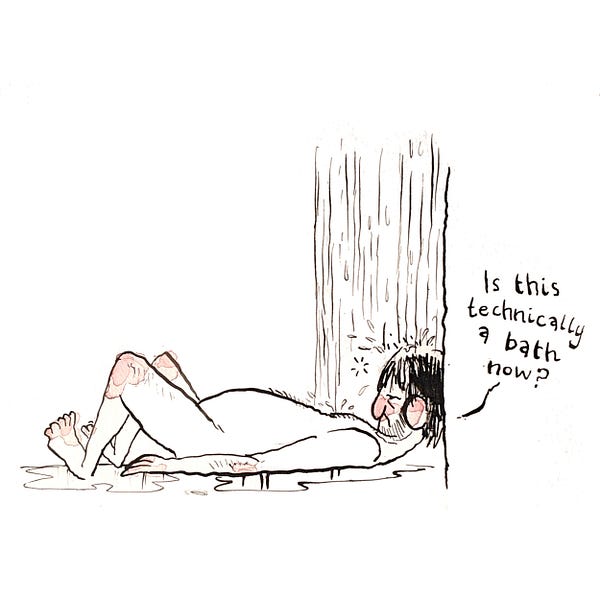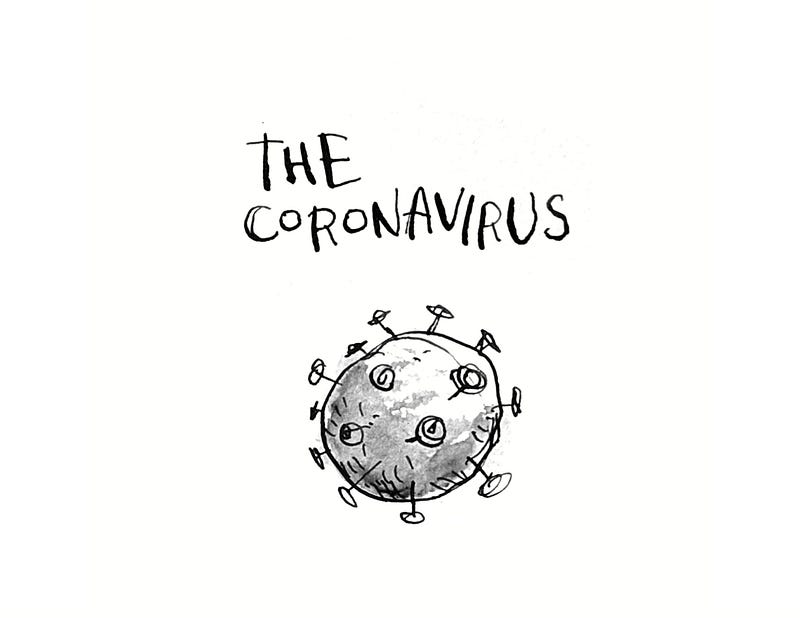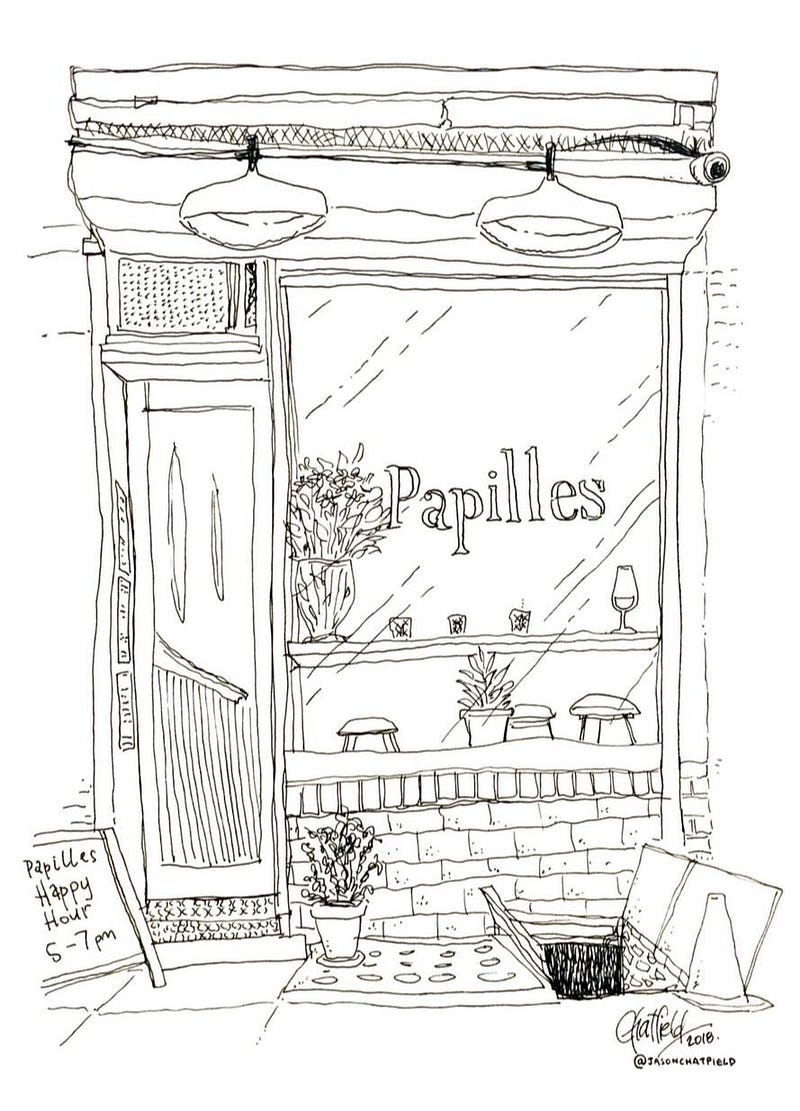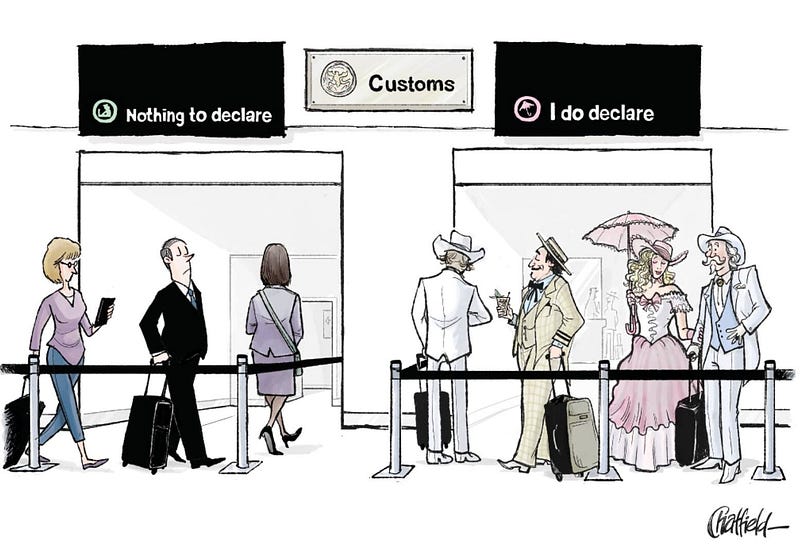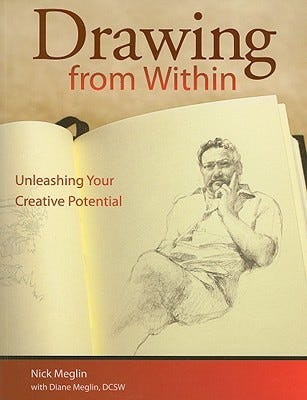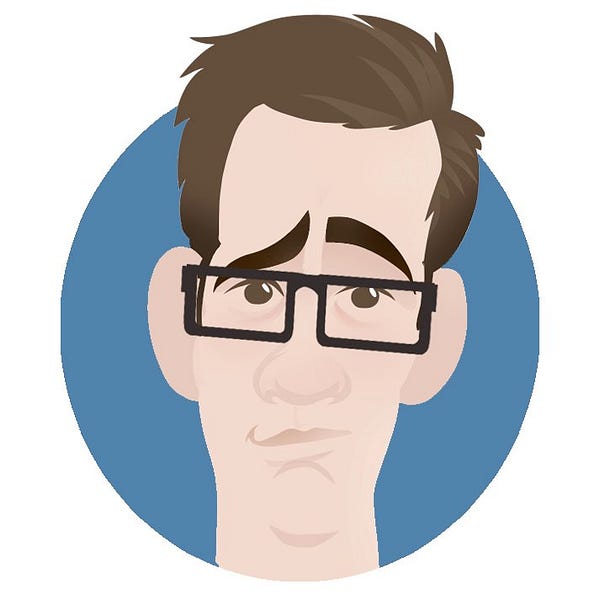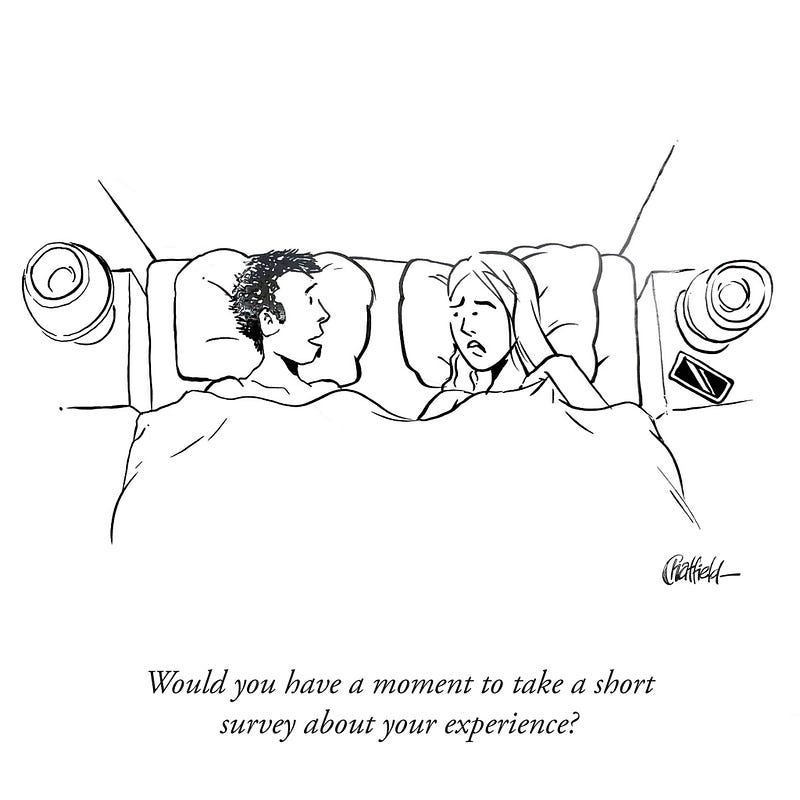Interview with Jason Chatfield : President @ National Cartoonists Society, Cartoonist for New…
Jason Chatfield (born 1984) is an Australian cartoonist and a stand-up comedian, currently living in New York City (NYC).
Jason Chatfield (born 1984) is an Australian cartoonist and a stand-up comedian, currently living in New York City (NYC).
At 23 he became Australia’s most widely recognized cartoonist, appearing daily in more than 120 newspapers in 34 countries.
His art encompasses the disciplines of comic strip, gag cartoon, editorial cartoon, book illustration, caricature and commercial art.
His work has been regularly featured in The New Yorker and MAD Magazine , WIRED, Airmail, Variety, The Weekly Humorist and other publications.
Jason Chatfield
Read more from Jason Chatfield on The New Yorkerwww.newyorker.com
A CARTOON FROM JASON CHATFIELD
Edit descriptionwww.madmagazine.com
His artwork has also been published in books published by Penguin Random House and Harper Collins.
At 26 he was appointed as the president of the Australian Cartoonists’ Association, making him the youngest individual to hold the position since the organization inception’s which was in 1924.
He currently serves as President of the National Cartoonists Society which was established in 1946.
He is an internationally syndicated cartoonist, writing and drawing the iconic comic strip Ginger Meggs (Est 1921) which is published daily in 34 countries through Andrews McMeel Syndication. It is one of the longest-running comic strips in the world. Jason has been writing and drawing Ginger Meggs since 2007.
Ginger Meggs
Trending Comics Political Cartoons Web Comics All Categories Popular Comics A-Z Comics by Titlewww.gocomics.com
Jason Chatfield has been performing comedy all over the world since last 13 years. He performs regularly at comedy clubs around New York City as well as hosting and performing all over the US, including The Fat Black Pussycat @ Comedy Cellar, Broadway Comedy Club, Stand-Up New York, New York Comedy Club, Greenwich Village Comedy Club, Carolines on Broadway, Gotham Comedy Club, West Side Comedy Club, Dangerfields Comedy Club, The Eastville Comedy Club, The Stand Comedy Club, Columbus Improv, Carolina Comedy Club, Catch a Rising Star, Bananas Comedy Club, 7 Angels Theatre in Connecticut and Rockwells Comedy in Pelham.
He has also appeared on national television along with regional, national and international commercials. You can also see him in the new season of Doodle Wars for NBC Universal’s Bluprint channel.
Jason has a podcast as well where he come up with New Yorker cartoons alongside fellow comedy-writer Scott Dooley called, “Is There Something in This?”
Excerpts from the interview:-
Q1) Hi Jason, thank you for doing this interview with me. I am really thrilled to have you for this collaboration. Can you tell our readers here about the significant role models in your early life when you were just starting out? How they had influenced your journey so far as a cartoonist or as an artist?
Jason : My biggest influences were the artists and writers of MAD magazine (Mort Drucker, Sergio Aragones, Jack Davis, Sam Viviano, Nick Meglin), and the cartoons on TV like Ren & Stimpy (Bob Camp and John Krisfaluci, as well as background artists like Bill Wray) and once my dentist in my hometown of Perth got a New Yorker subscription, I started reading (stealing) those and finding funny people in there like Sam Gross, Matt Diffee, Saul Steinberg etc.
Q2) My love for the New Yorker magazine stems from my elder sister. It is our regular habit to discuss some sarcastic article or artwork from the weekly magazine during weekends and brainstorming one-liners for New Yorker Caption Contest as well. We basically loved its edgy humour. There is definitely some sense of identification from Magazine’s writings or illustrations, it seems like the writer is able to put himself/herself in our shoes. I often wonder what does it takes to become a cartoonist for The New Yorker . Do shed some light how you became such a phenomenal cartoonist?
Jason : A lot of it is getting used to rejection, first. The New Yorker only has about 15–16 slots per issue, and receives thousands of cartoons each week to go through and consider for publication. You have better odds of hitting an ant on a bullseye of a dartboard, but it’s worth it if you like the New Yorker as much as we both clearly do.
The other thing is practice and study — look at the vast catalogue of other cartoonists and become familiar with the common traits of all of them; how do they see the world and how does your view differ. The key is to have a unique voice that doesn’t look or feel like everyone else’s (Although, back in the day there was a ‘house style’ and New Yorker cartoonists would often illustrate other peoples’ gags.) I’ve outlined my process here but the general gist of it is that you try and pitch consistently, sharpen your wits and your pencils as often as each other, and just keep churning out cartoons to pitch until you go blue in the face. Then keep going.
How to submit to the New Yorker - New Yorker Cartoonist Jason Chatfield
Want to submit a cartoon to the new yorker? Send your completed cartoons as a single PDF attachment (with one cartoon…www.jasonchatfield.com
Q3) What is your daily ritual? How do you approach your work?
Jason : The only consistent rituals I really have are walking the dog in the morning without anything but a book and a pencil, maybe a small piece of note paper. I don’t bring my phone or earbuds or anything. I sit and read while he runs around, and usually ideas come to me in those first hours after waking. I note them down, develop them, noodle around with the gags in my head. Once I think they’re ready to develop, I sketch up small thumbnails and get to work.
The other ritual is my Scotchbath. Every Sunday I tune out the world, grab something to read and maybe a notepad for ideas, pour a bath and pour a scotch. It’s #ScotchBathSunday. I highly recommend it.
Scotchbath Sunday - New Yorker Cartoonist Jason Chatfield
Even in these dark, difficult days, don't forget to treat yourself on Sunday with a ScotchBath. Pour yourself a bath…www.jasonchatfield.com
Q4) When you say you’re a cartoonist, not an illustrator, what’s the difference for you?
Jason : Illustrators are brilliant at what they do, so I don’t want to undermine illustrators in distinguishing the two jobs.
The difference is that cartoonists come up with the idea AND the drawing. Illustrators take a brief from someone as to what they’d like to illustrate, for the most part. Those who do not, are closer to fine artists than ‘illustrators’, in that they have their own vision and style and are able to express it through exhibition in various media. The short answer is: The cartoonist writes AND draws.
Q5) Would you say people have certain misconceptions about cartoonists?
Jason : I think they do- it’s not as carefree and aloof a life as some people think. Not all cartoonists are quiet, introverted geniuses tucked away in a cabin somewhere. Many are also outgoing, funny storytellers and artists with various other skills who might surprise you when they tell you they’re a cartoonist. We also aren’t all old white guys from Connecticut. The cartooning world is a vastly culturally, gender and background diverse industry in 2020, with various styles and voices. I think it’s important people know we’re not all old white guys with syndication deals :)
Q6) You illustrated a book as well-known book as Billy Bitcoin. Do tell our readers here about the book. Any personal incident you experienced which was depicted in the book.
Jason : Yes, I was bullied as a kid (who wasn’t!) Okay. Maybe bullies weren’t, but that’s beside the point. Maybe I’m insane.
The book was the brainchild of myself and the very clever Naomi Brockwell who has been working in the crypto space for many years. I’ve been following the industry since the word blockchain started creeping into the vernacular.
I think it’s important to educate kids on things like currency, technology and the world as early as possible so they aren’t starting out their lives from behind the 8-ball. I feel like by the time kids today are my age, there will be more ways to pay for something than there are things to buy! (Ok, maybe not… but again. I’m insane.)
Billy's Bitcoin
Education is 'Public" key This little book was an investment. As we teach the masses about blockchain and…www.goodreads.com
Q7) What do you see as the basic and fundamental factors in developing your sense of humour? The influences on humour now are certainly different from when you grew up I am assuming. Would you say that your personal humour is in sync with The New Yorker’s sense of humour?
Jason : I think family is a big one. My grandfather had a large part in raising me and he remembered every joke he ever heard (songs, too). He would tell them at the dinner table and sing to himself around the house. That left a big impression on me as a kid- he also met challenging times with good humour. I was very lucky to have that.
My Mum and sister had to move to a poorer neighbourhood when my parents split, into a smaller place, and the new kids I went to school with after I moved had a great sense of humour in the face of some pretty adverse lives. I was always drawn to funny people throughout my childhood, and by the time I started doing stand-up comedy in 2007, I’d almost exclusively built a support network of people who saw humour as a way of life. Comedians are some of the most wounded people you’ll ever meet, but they’re also the funniest.
Q8) Talking about social media or writing platforms like Instagram, Facebook, LinkedIn and Medium, your posts and writings certainly resonate with a loads of your followers. What is your relationship with these platforms in regards to your authenticity as an artist?
Jason : I have a very fraught relationship with all of them. I’ll tell you that I don’t actually spend much time on any of them — I pre-load all of my posts to be published on each of them every day using buffer.com and don’t much look at the reactions. Whether they’re positive or negative, it isn’t really much of my business. I create my art for me, I don’t do it to get likes, follows or shares.
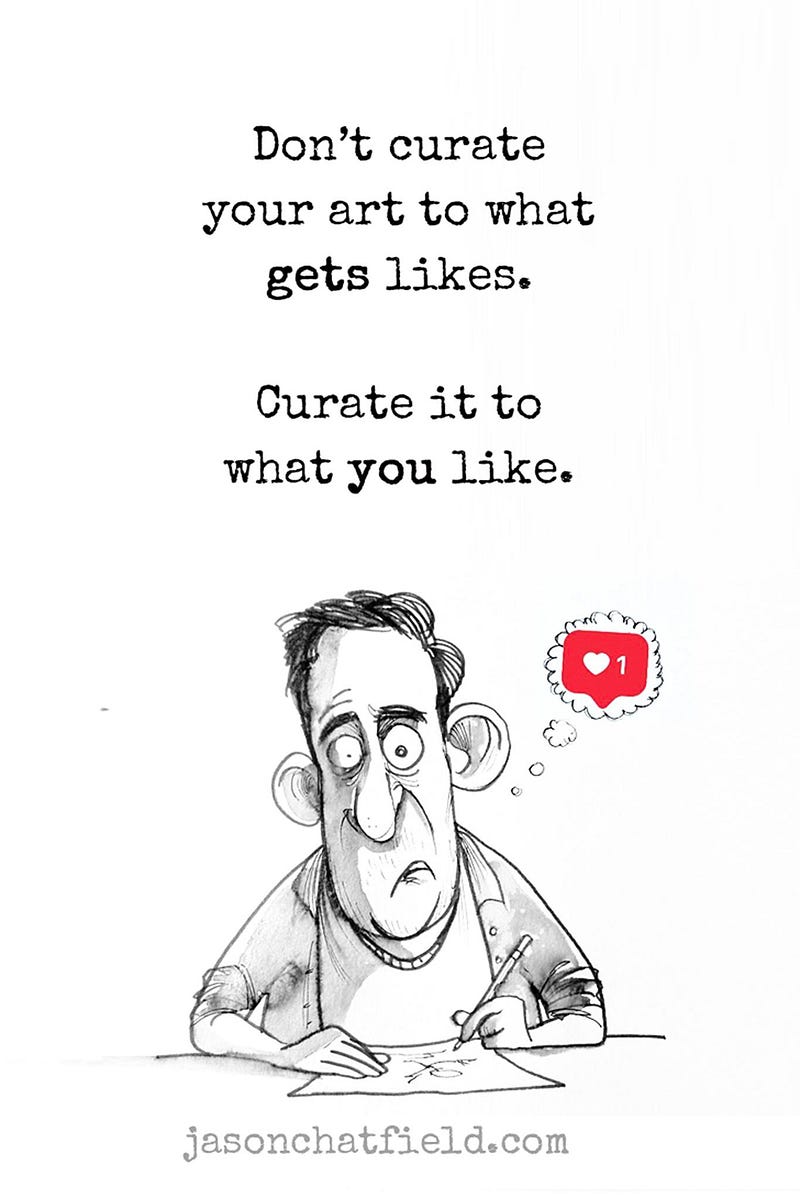
Shares are great when people like your work. They’re bad when they hate it. But sometimes your work just gets a life of its own once it’s in the viral pit of mystery within the social media spectrum.
The only platform I put any effort into is my weekly newsletter, in which I share my artistic thoughts, pictures of my dog and a free cartoon every week. I like the idea that the people who like it will stay, and the people for whom it isn’t their thing will leave, and I’ll be left with a nice group of people who are positive about receiving my work, whatever it is. To that end, most of my social media is full of plugs for my newsletter :)
Q9) I am 100 percent under the impression that we all have been guilty of dwelling on the negative in life. Everyone we meet have been down that road. It’s a mere human nature. How do you find that perfect balance between seriousness and humour in your work style? How did you detach yourself from all the negative thinking especially when you were diagnosed with the corona — virus and were able to focus to make a cartoon every day?
Jason : It isn’t easy, that’s for sure. I personally got the virus and had a very difficult time with it. My only way of coping was to draw my was through it, with a daily diary. I think people who write and draw cartoons have an in-built callous to the dreadful realities of life, and use humor as an invaluable coping mechanism.
New Yorker Cartoonist Jason Chatfield - My COVID-19 Diary
PLEASE NOTE: This is not professional medical advice. Call your doctor if you are experiencing symptoms. Footnote: We…www.jasonchatfield.com
It’s all we really have, isn’t it? Stressing and bemoaning the awful doesn’t change the awful. Changing your perception of things is the only thing you have control over, so you ought to cultivate that mental strength above all else. A healthy dose of Stoicism also helps to learn to love fate, no matter what it flings onto your plate.
Q10) Some of the cartoons I have observed you had made, they depict real-life musings. How did you feel when they first got chosen up by big publishers, notably the New Yorker, and presented to a large audience?
Jason : I was very nervous. There’s nothing more terrifying than the entire world weighing in on your work, but it can also be gratifying and give you a sense of accomplishment. One thing that is clear is that ‘the reaction does not belong to you.’
Once you push ‘send’ on that cartoon, the reaction is out of your hands. How people interpret your joke, or your art, are totally up to them. People will project whatever biases they have on it, and you have to be willing to let that happen. (Even if it feels like throwing a kitten into a snakepit).
I always pull my jokes from the real world because, well, the real world is ridiculous. If you’re paying attention to it, (hint: take out your earbuds) it’ll do all the writing for you.
Street Dining: The process of coming up my cartoon in this week's Airmail - New Yorker Cartoonist…
The above cartoon came out of thick air last month while I was stalking the now vacant streets of the Flatiron…www.jasonchatfield.com
Q11) One last question! What’s one piece of advice you would give to an aspiring cartoonist, writer or artist? Would you recommend them any coursework or practical training?
Jason : I highly recommend the book “Drawing From Within” by the late Nick Meglin.
Drawing from Within
14 fun and freeing drawing exercises release your inner artist! Drawing for the sheer pleasure is what this book is all…www.goodreads.com
To find your own voice is a difficult process, and he’s a brilliant guiding voice to helping you find it.
Thank you all for reading and a big thanks to Jason Chatfield for collaborating in today’s post!
It’s a pleasure!
If any of my readers here , wish to know more about Jason and his work. They can subscribe to his newsletters. Also , do open the links mentioned below. It has all the essential details about his online merchandise , portfolio , blog and sketchbook.
Website : https://www.jasonchatfield.com/
Blog : https://www.jasonchatfield.com/blog
Sketchbook : https://www.jasonchatfield.com/sketchbook
Store : https://jasonchatfieldstore.com/
Facebook : https://www.facebook.com/jasonchatfieldnyc
Instagram : https://www.instagram.com/jasonchatfield/
Twitter : https://twitter.com/Jason_Chatfield
LinkedIn : https://www.linkedin.com/in/jasonchatfield
Youtube : https://www.youtube.com/channel/UCtLlcZYArgadm3NpKmajlpA
Wikipedia : https://en.wikipedia.org/wiki/Jason_Chatfield




